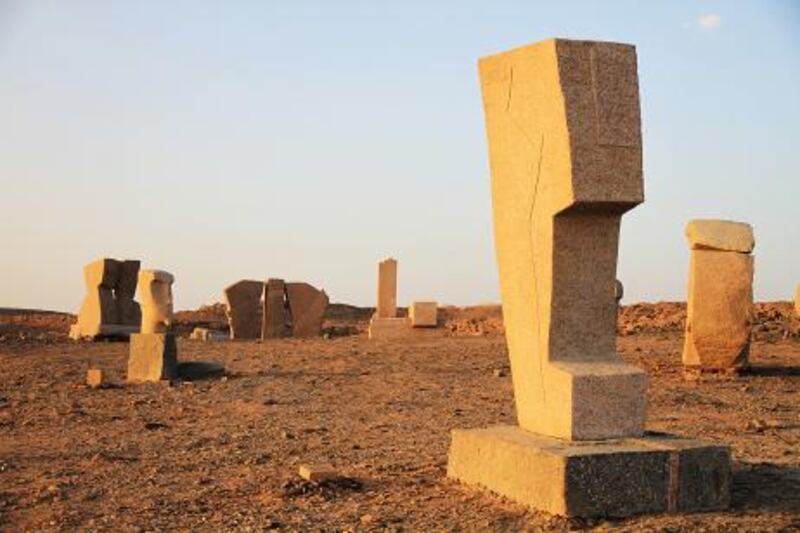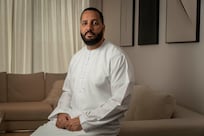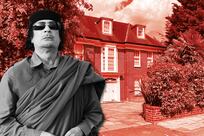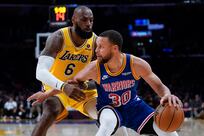The air is heavy with the fine dust that comes from sanding and grinding one of the earth's hardest stones. It gets everywhere - mouths, fingernails and even the furrows between the eyebrows screwed up to protect against the sun's glare are all full of white, clogging particles. The noise is unbearable and those who are shaping the rock all wear ear protectors. Someone accidentally cuts his hand and raises his voice in pain - and anger. Welcome to the world of granite sculpture and the agony and ecstasy that bind fellow artists together.
It is early 2011 and while Cairo is in turmoil, revolting against the unpopular Egyptian government, this car park in a hotel in the southern Egyptian city of Aswan sees the 16th Aswan International Sculpture Symposium continue regardless. Here for two months, 15 artists of varying ages, nationalities and abilities have come together, united in their single-minded aim of shaping granite into modern-day sculptural classics. Armed with what look like weapons for an assault course, they wield pneumatic drills, hand-grinders and polishers, diamond cutting wheels and hammers and chisels in the tough and mentally gruelling battle with the resistant stone blocks.
The blocks of black and pink stone are very heavy and demand every ounce of strength and concentration from even the most experienced of stone cutters. Yosin Ogata, a personable but formal Japanese artist in his 60s is intent on fashioning a drop of water seemingly suspended in mid-air in the centre of a hollow. His work is radically different from that of nearby Egyptian artist Nagui Farid, who is younger and whose work is more flowing and relaxed.
The point of this gathering is to sculpt new works of art for an outdoor museum near Aswan and to put young Egyptian sculptors in touch with foreign artists as well as getting them to hone their techniques. The annual get-together has been going on for 16 years now and is known as a symposium. It is the brainchild of Adam Henein, Egypt's leading sculptor, and he's adamant that one of the most important aspects is the sharing of artistic enthusiasm and expert knowledge. "We invite artists from all over the world so as to ensure a real mix," he says. "By putting our home-grown Egyptian artists alongside Germans, French or Japanese, we know that styles and techniques will inevitably be exchanged."
Henein, elegant in a white gelabiyya, goes on to say that while the use of granite was extremely widespread in ancient Egypt with monuments from the Sphinx to the pyramids at Giza being made out of this extremely hard stone, over the centuries its use had gradually gone out of fashion. It is, however, being restored to its position at the heart of Egyptian culture through the sculpture symposium, held within the city that traditionally provided the granite for ancient monuments.
"BIocks were cut from the quarries here and then floated down the Nile to where an obelisk or burial tomb was to be created," he says. A quietly confident figure, Henein is present every day for the two months of the symposium, overseeing without micro-managing. "Our knowledge of how to work granite was in severe decline, with only two really proficient Egyptian sculptors left," he says. "Having foreign artists working alongside our Egyptian sculptors allows us to catch up."
But it isn't all just chipping and grinding, and while the political events of 2011 are gripping, those involved in sculpting their granite find inspiration in the millennia of history encapsulated in Egypt's ancient monuments. According to Beate Rostas from Hungary, the most moving and impressive part of the symposium was the visit to ancient sites along the Nile early on in the programme. "When we saw the pyramids at Giza, we looked at each other in amazement," she recalls. "We had to ask what are we doing here in Egypt? Nothing we can do compares with those monuments." Beate is relatively young and has undertaken a bird-like structure that could also be construed as a person in an abstracted form.
But she admits that everyone wants to bring their own ideas and culture to Egypt and to leave something behind. Leaving behind their sculptures is all part of the plan to form an outdoor sculpture park in a underused granite quarry just outside the city of Aswan. Michael Sprogis, a Canadian artist who lives in Paris, is creating a complex, tall sculpture that combines pyramid, obelisk and Eiffel Tower. It consists of more than 170 pieces that have to be precisely cut and then accurately marked so that eventually they can be placed on top of one another to produce a tapering tower. The area is strewn with the cut blocks that now need to be polished. Sprogis admits he is overawed by the monuments that still attract tourists in the millions each year. "I cannot help but be amazed by how the ancient Egyptians fashioned such monumental art using no power tools," he says. "Today we have all the gadgets you can imagine and it is still very difficult to achieve the exact shape you want."
Work goes on early in the cool of the morning and in the later afternoon. Each artist has an assistant to help with the more mundane cutting and shaping. The ideas are first sketched out on paper and then, putting all their skill into turning, texturising, smoothing and puncturing the granite, the artists come face to face with the same problems that confronted artists working thousands of years earlier - except that the earlier stonecutters used only hand-tools.
Farid believes that he and his fellow Egyptian sculptors have inherited some innate ability to shape this heavy, hard stone. His work demonstrates what he sees as the Egyptians' different approach to shaping the rock. There is a softer, less confrontational style that seems to be concerned with the nature of the land, sky and river.
Roland Meyer, a German sculptor is supervising his abstract work that is being hand-finished by his Egyptian assistant. "We're from the western school with different art styles - Baroque, Rococo, Romance and others. Here it is an entirely different art form - the highest level that can be achieved," he says.
Henein picks up the story: "The ancient Egyptians worked in gangs and it would take several generations to complete just one of the huge statues. Sometimes, after working on the stone for many years, it would break and have to be abandoned," he explains. "But such was the dedication of the ancients that they would just pick up their simple tools and start on another piece."
As the sculptures are finished, mobile cranes arrive to take them from the hotel car park to their new home in the hills. The sculpture park, or open-air museum as the Egyptians call it, is on the top of an underused quarry. It overlooks the lake between the High Dam and the Aswan Dam and already there are almost 200 sculptures from earlier symposia. Each new piece is carefully placed so as to give it maximum exposure but not to block the view of another sculpture.
Hany Al Sayed, an Egyptian sculptor who favours abstract work, feels that what they are creating goes beyond contemporary art. "The men who handle the cranes and move the pieces into position don't refer to them as art," he tells me. "They always call them monuments. It's as if they are anticipating a time when tourists will come here to see our work."
Henein is slowly walking round the new pieces that have just arrived, he stops in front of one of his pieces: "I made this in honour of Farouk Hosni, the former Egyptian minister of culture," he says. "We wouldn't have been able to revive the skill and set up this open-air sculpture park without his support." The open-air museum is likely to be accessible to the public within the next couple of years with regular public transport running between the town and the museum.
There are plans for a bookshop, public seating and steps to make it easier for the curious to see the works. It is a quiet and peaceful spot that is not yet on the tourist route, but those who eventually venture out will be in for a very pleasant surprise when they do.
Follow us on Twitter and keep up to date with the latest in arts and lifestyle news at twitter.com/LifeNationalUAE





